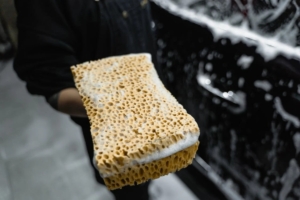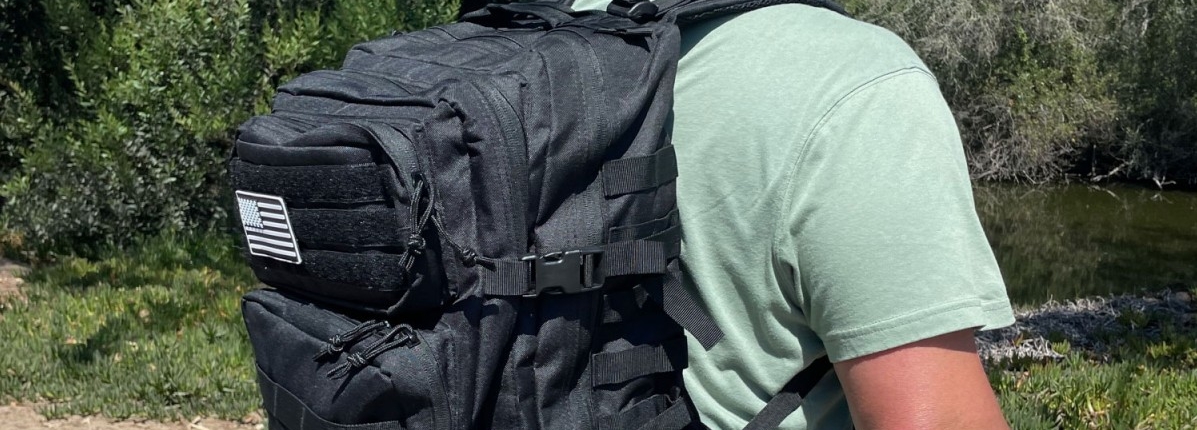Learn How to Wash a Backpack

Many quality backpacks, including tactical styles, are made of 600D nylon or better. This is a very durable fabric, but it’s a good idea to wash your backpack by itself to prevent any color bleeding. Below you will find the key steps on how to wash a backpack along with additional tips and information on cleaning plastic buckles.
- Check the care label. This will tell you if your backpack can be machine-washed or hand-washed. If it can be machine-washed, follow the instructions on the label. If it can only be hand-washed, follow the steps below.
- Empty the backpack. Remove all items from the backpack, including the straps and any other removable parts.
- Shake out the dirt. Shake out the backpack to remove any loose dirt or debris.
- Pre-treat stains. If there are any stains on the backpack, pre-treat them with a stain remover.
- Wash the backpack. Fill a sink or bathtub with lukewarm water and add a small amount of mild detergent. Using a bathtub for cleaning works best for bigger items such as men’s large backpacks. Place the backpack in the water and gently swish it around. Do not soak the backpack for too long, as this could damage the fabric.
- Rinse the backpack. Rinse the backpack thoroughly with clean water.
- Air-dry the backpack. Hang the backpack to dry in a well-ventilated area. Do not put the backpack in the dryer, as this could damage the fabric.

- Use a mild detergent. Harsh detergents can damage the fabric of your backpack.
- Do not use bleach. Bleach can also damage the fabric of your backpack.
- If you are washing the backpack by hand, do not wring it out. This could damage the fabric.
- Allow the backpack to air-dry completely before using it again.
Things to avoid when washing a backpack:
- Do not machine-wash a backpack that cannot be machine-washed.
- Do not soak a backpack for too long.
- Do not use harsh detergents or bleach.
- Do not wring out a backpack that is being washed by hand.
- Do not put a backpack in the dryer.
If your backpack includes plastic buckles and fasteners, reference the steps below for cleaning:
- Gather your materials. You will need warm water, dish soap, a soft-bristled brush, and a clean cloth.
- Fill a bowl with warm water and add a few drops of dish soap.
- Dip the brush (i.e. toothbrush) into the soapy water and scrub the buckle gently. Be sure to get into all the nooks and crannies.
- Rinse the buckle with clean water.
- Dry the buckle with a clean cloth.
If the buckle is very dirty, you may need to soak it in the soapy water for a few minutes before scrubbing. Be careful not to use too much force when scrubbing, as this could damage the buckle. If the buckle is made of a clear plastic, you may want to avoid using any harsh chemicals, as these could cloud the plastic.
Alternative cleaning methods for plastic buckles that you can try:
- Use a baking soda paste. Mix together equal parts baking soda and water to form a paste. Apply the paste to the buckle and scrub with a soft-bristled brush. Rinse with clean water and dry.
- Use white vinegar. Soak the buckle in white vinegar for a few minutes, then scrub with a soft-bristled brush. Rinse with clean water and dry.
Here are the steps on how to clean a zipper:
If the zipper is made of metal, you can use a mild abrasive cleaner, such as baking soda or toothpaste. Be careful not to get the zipper wet if it is made of leather or other water-sensitive material. If the zipper is still not working smoothly after cleaning, you may need to replace it.
- Unzip the item.
- Use a toothbrush or other small brush with soft bristles to scrub the teeth of the zipper.
- If the zipper is dirty or corroded, you can use a mixture of white vinegar and warm water. Apply the mixture to the zipper and scrub with the toothbrush.
- Rinse the zipper with clean water.
- Apply a lubricant to the zipper teeth. You can use a commercial zipper lubricant, or you can make your own by mixing a few drops of dish soap with a teaspoon of olive oil.
- Reassemble the zipper and test to make sure it works smoothly.
With proper care, your backpack should last for many years. Hope this helps and happy backpacking.





